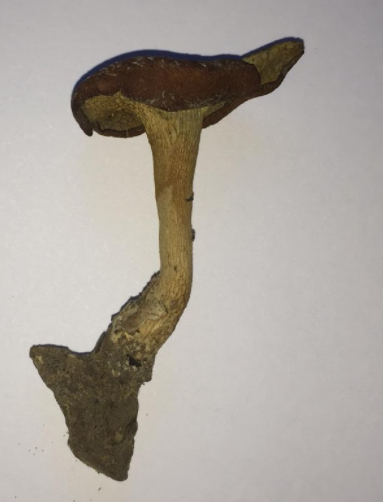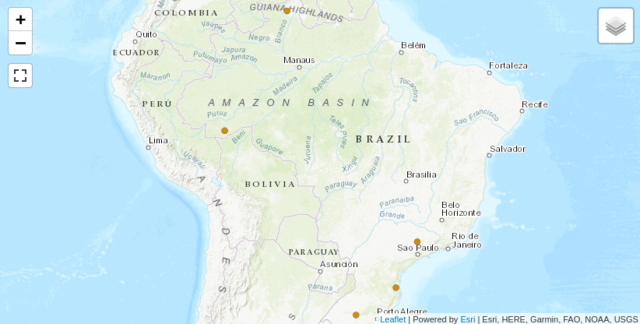Polyporus sapurema


Polyporus sapurema. Photo: Melissa Palacio
Polyporus sapurema is a saprotrophic species that causes white rot in deadwood. There are just six records of the species so far, all of them distributed in Northern and Southern Brazil, inside Amazonia and Atlantic Forest areas. P. sapurema is considered rare, as the areas in which it occurs are extensively explored. It is expected that the species has two subpopulations, one restricted to Nothern Brazil and the other to the Southern part of the country. The main threats to the species are fragmentation and degradation of its habitat due to climate change and Amazonia and Atlantic Forest deforestation. The Amazon is especially threatened by logging, cattle grazing, and crop plantations, as an economic plan for the region. Based on the species occurrences, estimated population data, and threats to its subpopulations, P. sapurema is considered Near Threatened in criterium C1 of the IUCN.

P. sapurema distribution map. https://www.iucnredlist.org/species/209595344/209596582.
References
- Palacio, M., Magnano, A., Drewinski, M., Alves-Silva, G., Martins da Cunha, K., Kossmann, T., Costa-Rezende, D.H., Trierveiler-Pereira, L., Baltazar, J.M., Vieira de Miranda, M. & Drechsler-Santos, E.R. 2021. Polyporus sapurema. The IUCN Red List of Threatened Species 2021: e.T209595344A209596582. https://dx.doi.org/10.2305/IUCN.UK.2021-3.RLTS.T209595344A209596582.en. Accessed on 02 February 2022.







